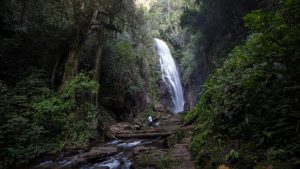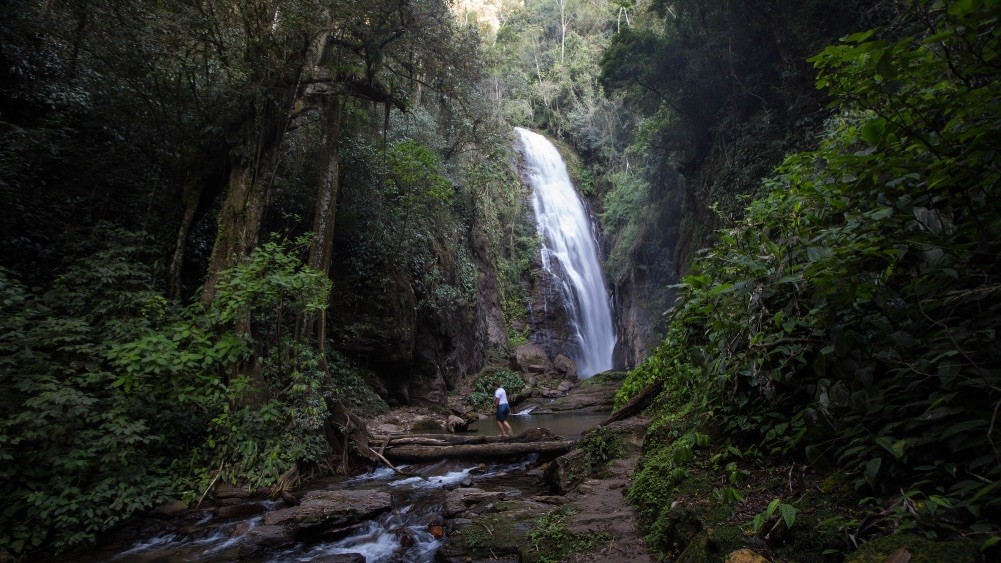Healing the water heals the wounds of the earth and its people

The seventh and last reflection of the Seven Weeks for Water 2021 of the WCC’s Ecumenical Water Network is written by Andrew Schwartz.* In the following reflection during Holy Week, he is using a small town in the USA as a case study to emphasise how local communities can take small initiatives to “resurrect” the contaminated or “dead” groundwater to form life giving waters. Leaving us on a positive note, he ends by saying, “if Holy Week teaches us anything it’s that death is not final.”
Text
Isaiah 42:1-9
Reflection
There’s a town in the Central Valley of California named Allensworth. It’s a few hours from most anywhere and is easily missed in the web of state highways and wandering local roads that are bent this way and that by plots of almond groves.
The land is hard. Harder than it should be. Harder than it’s ever been. Decades of water-intensive farming by hedge fund managers and farmers who don’t have the moral imagination to look past tomorrow’s dollar have drained the land. So has climate change. When Col. Allensworth founded the town in 1908 as a place for Black Americans looking for a chance to be free and live well, it was on the banks of Lake Tulare. The black farmers are echoes in history now because of racist policies that drove them off the land. Lake Tulare, once the largest lake west of the Rockies, is barely a shadow of itself. The waters that used to reliably come down from the distant Sierras in the spring melt have slackened and the seasonal rains are barely a spit.
Unsustainable farming and climate change have caused the water tables to drop in the Central Valley which has caused the arsenic concentration in the soil to rise. Arsenic is a naturally occurring element, traces of which have little effect on our health. However, the levels in the soil in Allensworth have reached the point of poison which not only makes the water undrinkable but unsafe for cooking or bathing. In this pathetic water situation, the poor community residents must buy water for all needs. Most of the residents of Allensworth are Brown and Black. Most all of them are poor. That’s not an accident, of course. It never is. When land and the fruit it produces become commodities, the people who work it do too.
The last week of Lent is a paradox. It’s standing at the precipice knowing that death waits just a little bit further down the road. Even worse, knowing that the encounter with death is inevitable and irreversible, at least until it isn’t. 2020 was a year of death. The COVID-19 pandemic brought millions around the world to early deaths. But it also brought death to countless rituals and moments of community, and to dreams so hard-worked for that must be said goodbye to. It brought the death of reason for all too many, the death of security and even hope.
Hope is hard to find when death might be behind every breath, every hello, every I love you. But if Holy Week teaches us anything, it’s that death is not final. Death is the sister to dreams and dreams give birth to hope. We must not forget to dream. We must not forget that within God exist the seeds and waters of life that we cannot comprehend, and that the goodness will not be exhausted until justice is established in the Earth (Is. 42:4).
I’m reminded of the God who consistently makes a way out of no way. For whom death has no purchase. Who restores that which is broken and breathes life into a valley of bones? To me, it’s a mandate to dream of beauty. To dream of the act of creation and hope and healing and then to start working to make those dreams manifest.
In Allensworth, a collection of residents, scientists, environmentalists and people of goodwill have come together to heal. Amidst the rows of corporatized groves of almonds, this group is planting flowers and vegetables that heal and rehabilitate the land by drawing the arsenic into their roots and fibers. With each passing season of growth, harvest, decomposition, and growth again the soil becomes more healthy, more alive. As the soil is healed, the water heals too. Their effort is small but so is everything when it first begins. It will grow and, as it grows, the people and the land, and the water will find new life together.
Questions for discussion
- Baptism is used to symbolize rebirth and new beginnings. What would it mean for us to baptize the land and the waters that sustain us and the ecosystems we live in?
- Where do you see connections between pain in the natural world and pain in our society? How can healing one area help heal another?
- Climate change disproportionately impacts marginalized communities. Who in your community is the most at risk from pollution or toxic sites and why are they in more danger than others?
Actions
- Take time to learn about water usage in your area and how it affects the local ecosystem. Who is it managed by and how?
- What can you plant in your yard or church yard that can help rejuvenate the soil and bring health to the land?
- Learn who in your community or surrounding area is water insecure and dependent on bottled water for their daily needs. You can help them financially and by spreading awareness.
- Have your water and soil tested to learn what is in it.
Resources
- https://watersheddiscipleship.org
- https://centerforearthethics.org/resources-legacy/water-liturgies/
- https://blackchurchfoodsecurity.net
- http://interfaithfood.org/resources/congregational-toolkit/
- https://centerforearthethics.org/wp-content/uploads/2019/02/LOVE-THE-WATER-Steps-to-build-Community-and-Congregation-around-Water-2-1.pdf
*Andrew Schwartz lives in beautiful Portland, OR with his amazing wife and daughter. He’s the director of Sustainability and Global Affairs at the Center for Earth Ethics.

